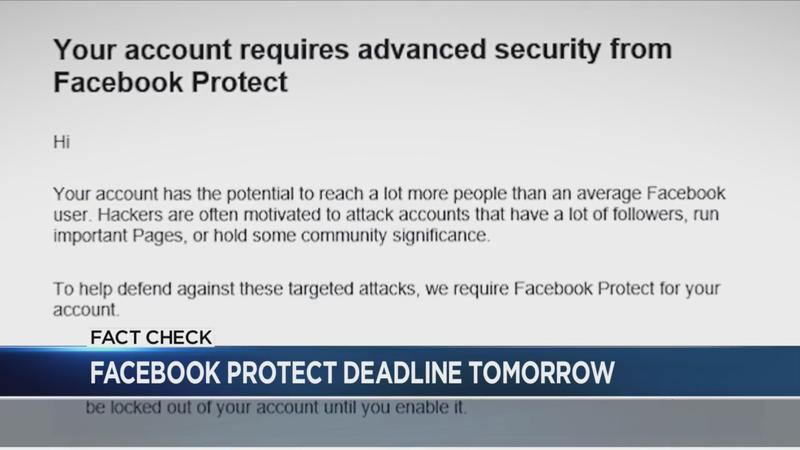Fact Check Follow-Up: Facebook Protect’s deadline
[anvplayer video=”5096436″ station=”998131″]
ROCHESTER, N.Y. (WHEC) — Time for a Fact Check Follow-Up. Earlier this month we told you about an alert from Facebook. It said if you didn’t take action by a certain date you’d be locked out from your account. Well, that deadline is now here.
If you got that notification, you need to turn on Facebook Protect by March 17. We’re reminding you since we know there are a lot of procrastinators out there, like our own anchors, Brennan Somers and Brett Davidsen.
As we’ve told you, Facebook Protect is legit. It’s not a scam. The program provides extra security so you don’t get hacked. Not everyone is getting this added feature yet. Right now it’s only for people who are more likely to be targeted by malicious hackers, including journalists and government officials. However, Facebook plans to expand this program to more and more people this year.
Facebook Protect helps users adopt stronger security protections like two-factor authentication and monitors for potential hacking threats. Again, if you got the alert you need to enable it by March 17 or you’ll be locked out.
It’s really easy to turn on. Here are step-by-step instructions:
- Click "Account" in the top right of Facebook.
- Click "Settings & Privacy", then click "Settings".
- Click "Security" and "Login".
- Under "Facebook Protect", click "Get Started".
- On the welcome screen, click "Next".
- On the "Facebook Protect benefits" screen, click "Next".
By the way, you don’t need Facebook Protect to set up two-factor authentication.

[News10NBC]
Here’s how to do it on your own:
- Go to your "Security and Login" settings.
- Scroll down to "Use two-factor authentication" and click "Edit".
- Choose the security method you want to add and follow the on-screen instructions.
When you set up two-factor authentication on Facebook, you’ll be asked to choose one of three security methods:
- Tapping your security key on a compatible device.
- Login codes from a third-party authentication app.
- Text message (SMS) codes from your mobile phone.